 Get to know US
Get to know US
Going strong since 1983
The WBNA is a Rhode Island non-profit 501c(3) organization that is governed by an all-volunteer, neighborhood-based board of directors with three part-time staff. We strive to reflect the demographics and diversity of our neighborhood within the makeup of the organization.
Our focus area roughly extends north to Broadway, south to Cranston Street and Union Avenue, west to the service road at the Route 6/10 connector and east to the service road at I-95.

 Neighborhood demographics
Neighborhood demographics

 NEIGHBORHOOD HISTORY
NEIGHBORHOOD HISTORY
Colonial Providence
Once reliant on shipping and the slave trade, Colonial Providence shifted to a manufacturing economy in the early 19th century due to the rise of textile mills. The city expanded across the Weybosset flats and up the hills south of the Woonasquatucket River.
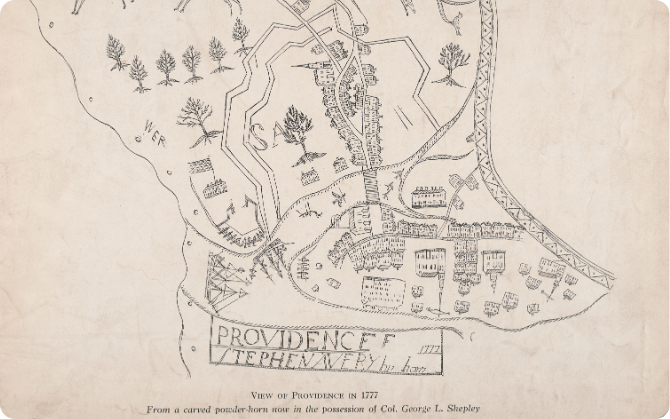
 NEIGHBORHOOD HISTORY
NEIGHBORHOOD HISTORY
Hoyle Tavern & Square
The area was first settled for farming after King Philip’s War. In 1739, Obidiah Brown built the Hoyle Tavern at the intersections of Westminster and Cranston Streets, near present-day Classical High School, attracting settlers nearby. During the 19th century, the area developed with factories near Long Pond and grew residentially after the introduction of a horse-drawn coach in 1855 and a streetcar in 1865. The tavern was demolished in the late 19th century and the bank constructed in 1921.

 NEIGHBORHOOD HISTORY
NEIGHBORHOOD HISTORY
Dexter Training Ground
This 10-acre park is one of Providence’s most historic public spaces. Donated by Ebenezer Dexter in 1824 as a military drill field, parade ground, and park, it became part of the city’s park system in 1893. A bronze statue of Dexter was added in 1874. During the Civil War, Rhode Island troops camped and trained here before joining Union forces, and the park continued to be used for military training through World War I. Today, it remains an important community space in the densely populated West Broadway neighborhood.
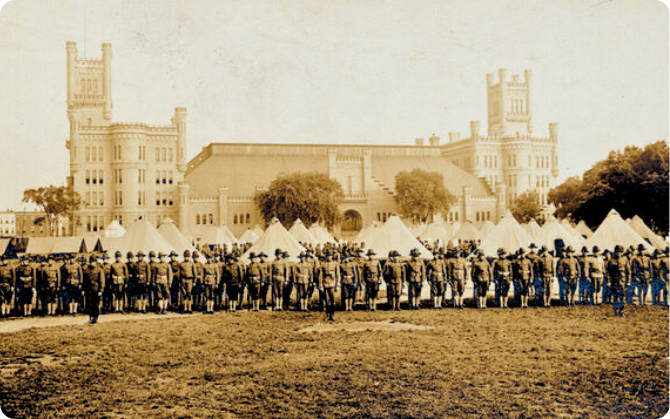
 NEIGHBORHOOD HISTORY
NEIGHBORHOOD HISTORY
Irish Immigration Reshapes Providence’s Labor Landscape
The mills needed workers, so recruiters turned to foreign labor. The first wave came from Ireland, especially from the mill towns of Ulster, with many arriving after 1845 to escape the famine. By 1865, one-third of Providence’s fifty-five thousand residents were Irish-born, with many settling near the east end of Atwells Avenue and further west around the mills in Olneyville.

 NEIGHBORHOOD HISTORY
NEIGHBORHOOD HISTORY
St. Mary’s Catholic Church
St. Mary’s is a Gothic Revival monument honoring Providence’s Irish heritage. Many Irish immigrants from Ulster arrived in the early 19th century to work in local textile mills, often facing discrimination. and by the end of the Civil War, one-third of the city’s residents were Irish. Designed by Irish architect James Murphy, construction began in 1864, with much of the labor provided by the Irish congregation. Consecrated in 1869, St. Mary’s became a hub for schools and convents, adapting to the city’s changing needs.

 NEIGHBORHOOD HISTORY
NEIGHBORHOOD HISTORY
Bell Street Chapel
The Bell Street Chapel in Providence is a stunning French neoclassical temple built in 1875 for art dealer James Eddy. The design was created by architect William R. Walker. Eddy, a progressive who supported temperance, women’s rights, and abolition, dedicated the church “to God, to Truth, and to all that ennobles Humanity.” However, he couldn’t find anyone to lead a congregation based on his vision, leaving the church empty until after his death in 1888. The first service held there was Eddy’s memorial, led by Anna Garlin Spencer. She was Rhode Island’s first female ordained minister and a notable activist against misogyny, racism, and poverty. Today, the Unitarian Universalist congregation, led by Reverend Margaret Weis, continues the pursuit of social justice.
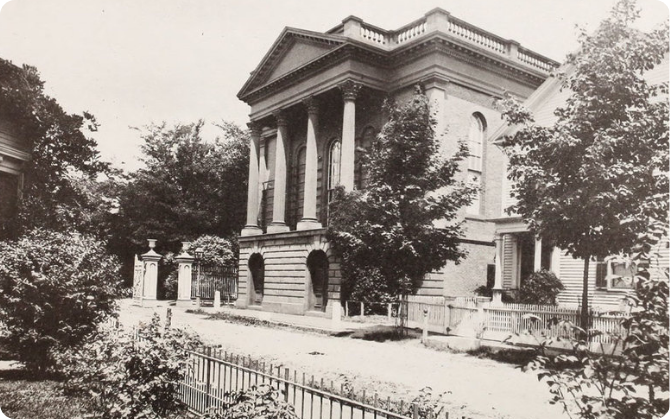
 NEIGHBORHOOD HISTORY
NEIGHBORHOOD HISTORY
Wedding Cake House
Built around 1867 by architect Perez Mason, the mansion captures the exuberance of new wealth. The initial owner, John Kendrick, was an inventor whose American Supply Company was a leading force in the global market for loom and reed harnesses, essential components of power looms in textile mills. After being owned for a time by railway and button-fastener magnate George Prentice, it was acquired in 1915 by Italian immigrant dressmaker Anna Tirocchi. In the Wedding Cake House’s elegant salons, Anna and her sister Laura dressed Providence’s high society in their couture designs inspired by Parisian styles.

 NEIGHBORHOOD HISTORY
NEIGHBORHOOD HISTORY
Waves of Immigration
After 1880, a significant wave of immigration from Southern Europe arrived in Providence aboard Fabre Line ships from Naples. The Italian immigrants found work in the mills and jewelry factories of the bustling “Beehive of Industry.” As the century turned, global migrations surged, with various nationalities enriching the city’s diverse culture, including Germans, Swedes, Portuguese, Poles, and French Canadians, as well as Jews fleeing the pogroms in Russia and Armenians escaping massacres. Many of these immigrants settled on the West Side of the city.
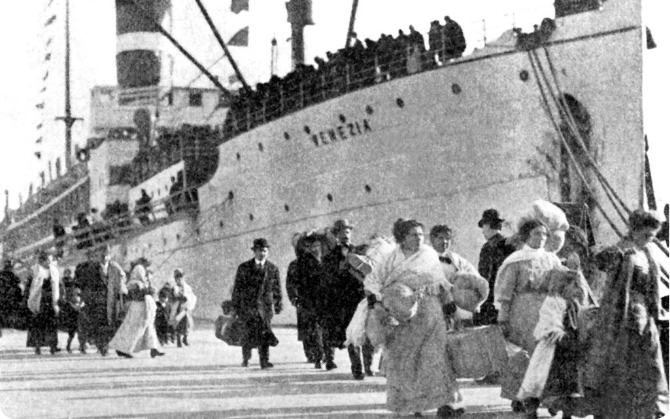
 NEIGHBORHOOD HISTORY
NEIGHBORHOOD HISTORY
Barnaby Castle
This lavish home was designed in two phases (1875 and 1888) by the well-known Providence architectural firm Stone, Carpenter & Willson. Its eclectic styles were influenced by its owner, Jerothmul B. Barnaby, a prominent retail magnate with a large downtown department store. Known for his reckless driving, Barnaby left a contested estate to his daughters after his death in 1889, sparking a legal battle with his wife, Josephine Barnaby. Josephine, perceived as easily swayed, fell under the influence of her doctor, Dr. Thomas Thatcher Graves. In 1891, while visiting Denver, she received poisoned whiskey by mail and died shortly after. Graves’ trial for America’s first murder-by-mail became a national sensation. He was convicted and committed suicide in prison in 1893 while awaiting an appeal.

 NEIGHBORHOOD HISTORY
NEIGHBORHOOD HISTORY
Cranston Street Armory
Built in 1907 on an 11-acre site in Providence’s West End, the Cranston Street Armory was designed to accommodate the Rhode Island National Guard. The renowned architectural firm William Walker and Sons drew inspiration from existing armories in Boston and New York City. The structure features two six-story crenellated towers flanking two matching four-story office blocks, with a hip roof supported by a steel truss system. The yellow brick and reddish granite façade showcases Romanesque details, copper trim, and corbelling. The armory is built with three-foot-thick walls, and its construction by M.J. Houlihan cost $650,000.
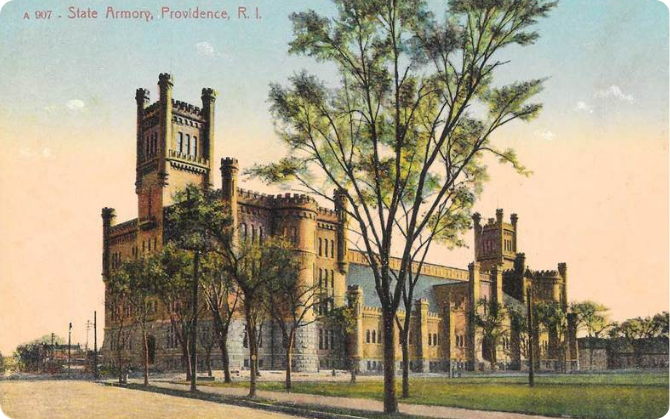
 NEIGHBORHOOD HISTORY
NEIGHBORHOOD HISTORY
Luongo Square
Luongo Memorial Square honors local World War I veterans Thomas S. and Vincent Luongo. Formerly known as Decatur Square until 1938, it offers a glimpse of 19th-century urban life. The intersection of Fountain and Carpenter Streets reflects the organic layout of early Providence, serving as a residential area for the working class, tucked away from the bustling Broadway and Westminster thoroughfares.
In 2003, the West Broadway Neighborhood Association sought federal funds to enhance the square. After years of planning and advocacy, construction began in late 2015. In May 2017, the Decatur Square Fountain was inaugurated, marking the completion of the new mini-park. In 2020, two historic plaques were added as part of WBNA’s Know Our Neighborhood History initiative.

 NEIGHBORHOOD HISTORY
NEIGHBORHOOD HISTORY
1560 Westminster
Once a prestigious avenue lined with opulent mansions to rival Broadway, Westminster Street transformed into part of Route 6, a transcontinental highway stretching from Provincetown, Massachusetts, to Long Beach, California. With the construction of the Interstate network, traffic was diverted, leaving gas stations like this one searching for new purposes. In 1987, the West Broadway Neighborhood Association purchased the building and began renovations, establishing a presence that has continued ever since.


 Resources
Resources
Developed for the neighborhood by the neighborhood

COOKING OIL RECYCLING PROGRAM
WBNA’s Cooking Oil Recycling Program is a partnership with Newport Biodiesel that helps turn cooking waste oil into clean burning fuel for heating homes and powering vehicles.
READ MORE »
NEIGHBORHOOD TOOLBANK
A perk of WBNA membership, the Neighborhood Toolbank is available for current members to affordably rent home.
READ MORE »
COMMUNITY GARDENING
This pilot program places abundant raised beds atop asphalt, impermeable surfaces, contaminated land, and spaces where in-ground gardening isn’t possible.
READ MORE »  JOBS
JOBS
Work where you live
WBNA Business Members can
post job openings
Neighbors can apply directly to
local businesses
Neighbors and small businesses thrive
